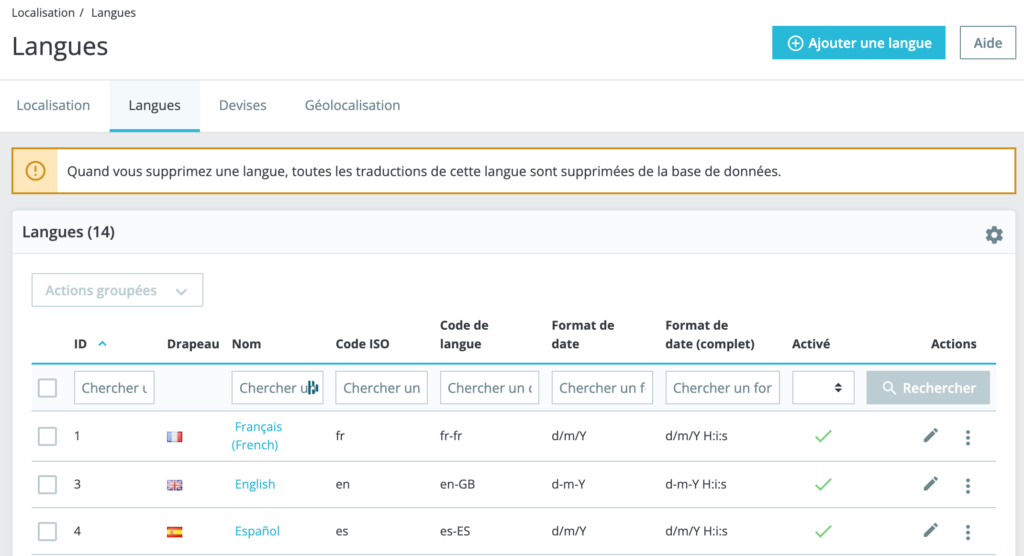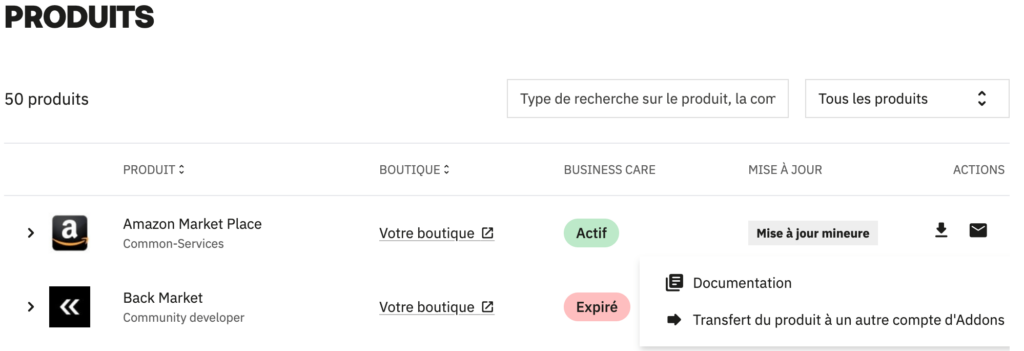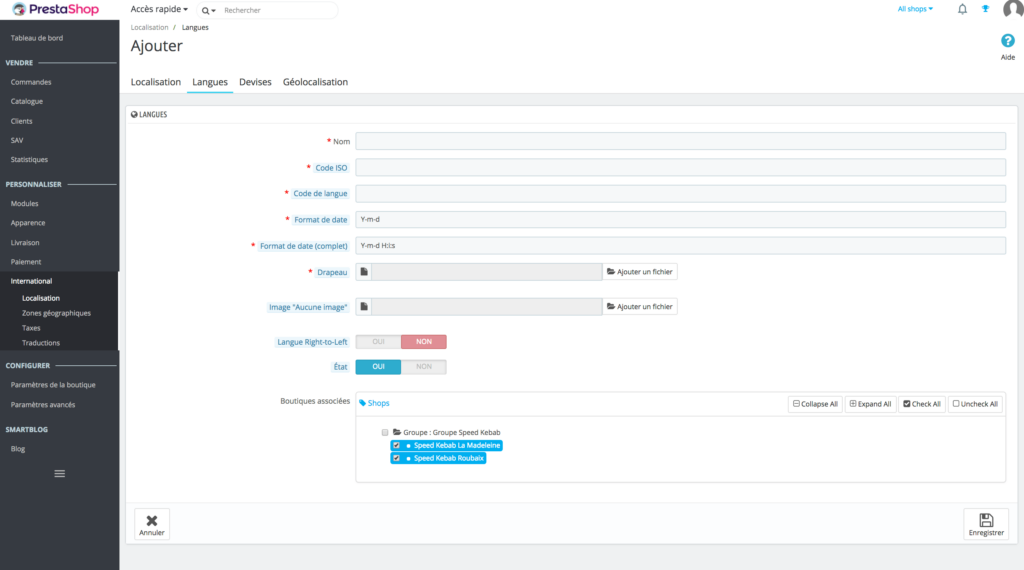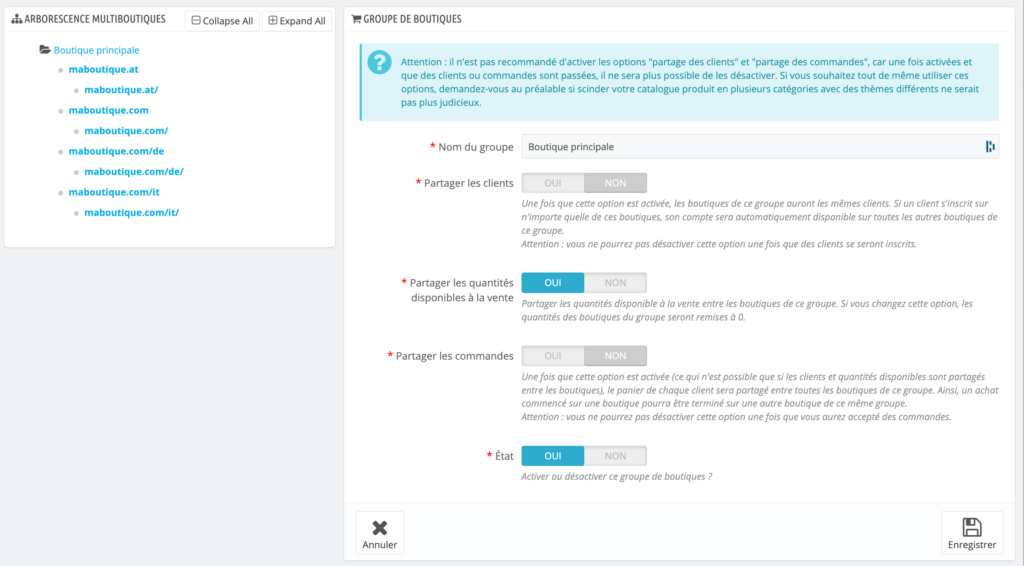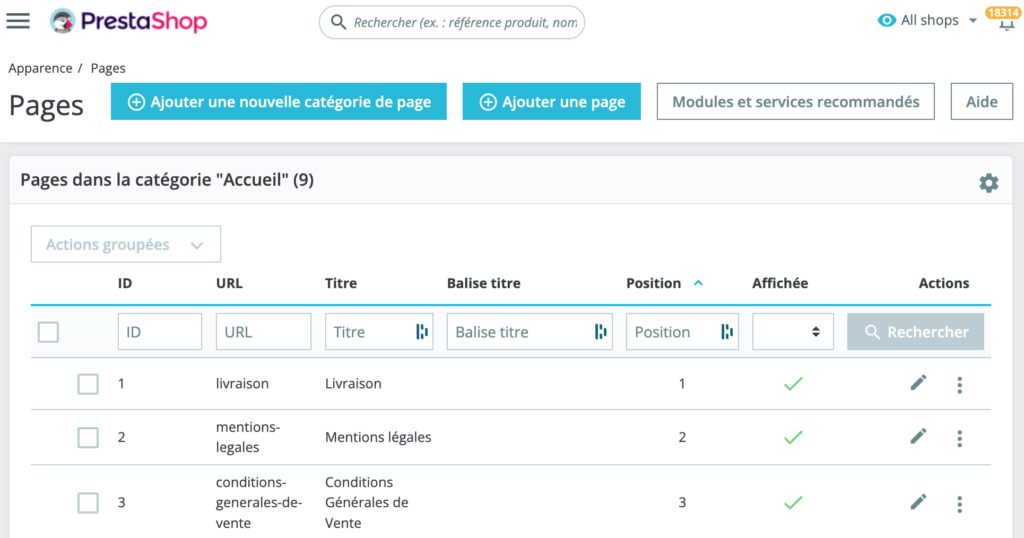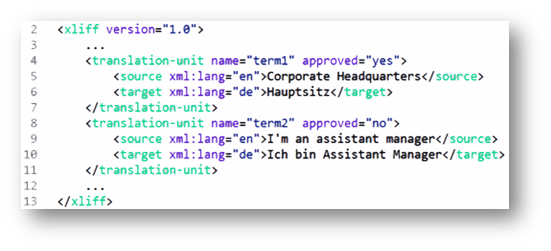How to translate your PrestaShop store?
 Do you want to develop your e-commerce business internationally? Then translating your PrestaShop store is essential to open these new markets.
The PrestaShop CMS has its own translation system to help you set up new international versions of your site.
However, you will need to verify that your theme and modules are properly translated.
There are multiple ways to do this: automatic translation, semi-automatic with ChatGPT, manual translation or by a professional…
In this guide, we will give you all our tips and tricks to perfectly translate your PrestaShop store 😊
Do you want to develop your e-commerce business internationally? Then translating your PrestaShop store is essential to open these new markets.
The PrestaShop CMS has its own translation system to help you set up new international versions of your site.
However, you will need to verify that your theme and modules are properly translated.
There are multiple ways to do this: automatic translation, semi-automatic with ChatGPT, manual translation or by a professional…
In this guide, we will give you all our tips and tricks to perfectly translate your PrestaShop store 😊 I. Prepare your PrestaShop for translation
Before starting the translation of your PrestaShop store, it is essential to prepare well and consider several crucial elements to ensure a smooth and efficient translation process.
Here are the aspects to consider before embarking on translating your store.
1. Basic settings verification
Activating multi-language functionality
The first step is to activate the multi-language functionality in your PrestaShop store. This allows you to add and manage multiple languages.
To do this, go to the PrestaShop back office, then navigate to “International” > “Localization” > “Languages”.
Here, you can add the necessary languages for your store. Also make sure that the languages you want to use are activated.
Checking theme and module compatibility
Before starting translation, it is crucial to verify that your store’s theme as well as all modules used are compatible with the languages you want to add.
Some themes and modules may require specific adjustments or updates to support multiple languages.
Consult the documentation of your theme and modules to check their multi-language compatibility.
To do this, simply go to the “Products” section on PrestaShop’s Addons marketplace. Then click on the module of your choice and download its documentation.
We recommend asking your developer to analyze this.
2. Identifying elements to translate
Translating your PrestaShop store involves several types of content:
- Static texts: These include CMS pages (About, Terms and Conditions, etc.), product descriptions, categories, and product features.
- Dynamic texts: This includes emails sent to customers (order confirmation, shipping notification, etc.), system messages, notifications and error messages.
- Specific modules and themes: Some modules and themes may have their own texts to translate. Make sure to include them in your translation plan.
Don’t worry, PrestaShop already includes a significant number of translations at the heart of its CMS.
If there’s one thing to remember, it’s that you’ll only need to translate the basic “e-commerce” elements (static content) once and continuously translate new content.
3. Define your URL structure: multidomain, subfolder or subdomain
A recurring question is whether it’s better to use a domain name per country, subdomains, or subfolders to structure a multilingual website.
We’ll help you make this choice because there are actually 3 different strategies.
Three domain name strategies for a multilingual site
Strategy 1: Multidomain (www.yoursite.fr; www.yoursite.com; www.yoursite.es)
This strategy is often most suitable if your business requires a strong local presence in each targeted country. It consists of:
- Creating a distinct site for each market, with a specific domain name (for example, www.yoursite.co.uk, www.mywebsite.com). This allows more autonomous and responsive local management. It’s possible to manage these domains via a single back office if you opt for a compatible CMS or e-commerce platform.
- Developing unique content for each site to better adapt to local specificities, or translating content into different languages.
👍 Advantages:
- Site optimization for each region, allowing specific tests to improve conversion rates according to local shopping behaviors.
- Using a local domain to strengthen consumer confidence and favor obtaining local backlinks, thus improving SEO.
👎 Disadvantages:
- Each domain must be indexed individually, increasing workload.
- High cost, as SEO must be repeated for each market.
Strategy 2: Subfolder per language (www.yoursite.com/en/; www.yoursite.com/fr/)
If your main site is well established, this approach can be beneficial. It relies on:
- Using an international domain name (often .com, .net, .org), allowing you to capitalize on existing reputation.
- Creating specific subfolders for each language or country (for example, www.yoursite.com/fr/).
👍 Advantages:
- Centralized SEO management, where each incoming link benefits the entire site.
- Suitable for SMEs with reduced maintenance needs.
👎 Disadvantages:
- Less proximity with consumers compared to a multidomain site.
- Difficult to obtain local backlinks compared to a multidomain approach.
Strategy 3: Subdomain per language (www.en.yoursite.com; www.fr.yoursite.com)
This strategy, while less favorable for SEO, is less expensive and suitable for smaller sites:
👍 Advantages:
- Simple to implement.
- Easy management of different languages via Google Search Console.
👎 Disadvantages:
- Each subdomain requires separate indexing, which increases work.
- Internet users may perceive subdomain use negatively, questioning site localization.
Additional factors
Other elements, such as available budget, level of competition in the sector, and client typology (B2B or B2C), must also be taken into account when choosing domain name strategy.
For a personalized evaluation of the strategy most suitable for your project, don’t hesitate to consult us.
II. Difference between multilingual mode and multi-store
When managing an online store with PrestaShop, you have the possibility to extend your activities through two powerful features: Multi-store mode and Multilingual mode.
Although these two options may seem similar, they respond to different needs and offer distinct capabilities for managing and customizing your online store.
Here’s an overview of the main differences between these two approaches:
Multilingual mode
Multilingual mode allows you to manage multiple languages within a single PrestaShop store. This functionality is ideal for businesses that want to offer their products and services to international clientele, while keeping a single store.
⭐ Functionality: Multilingual mode allows you to translate all your store content, including product descriptions, CMS pages, emails, notifications and user interface texts. Site visitors can select their language of choice to browse and make purchases in the language most comfortable for them.
⚙️ Management: In this mode, all languages are managed within a single store instance. You have only one product database, one catalog, and one inventory management, but content is displayed in different languages based on user selection.
🎯 SEO: Multilingual mode allows you to optimize your store for SEO in multiple languages. Each language can have specific meta tags, URLs and content, which improves your store’s visibility in international search results.
✅ Advantages: Simple to manage if you have a common catalog and only want to localize content for different linguistic regions. It’s an efficient solution for stores wanting to reach an international audience without complicating operational management.
Multi-store mode
Multi-store mode allows you to manage multiple distinct stores from a single PrestaShop installation. This option is ideal for businesses wanting to manage different brands, product lines, or target different geographic markets with distinct catalogs.
⭐ Functionality: Multi-store mode allows you to create and manage multiple stores with independent configurations and designs. Each store can have its own product catalog, prices, payment and delivery methods, and even its own theme. You can, for example, have a store for each country, each brand or each product category.
⚙️ Management: Although each store can be distinct, all stores share a common administration base. This means you can manage inventory, orders, and customers from a single back office, but with the flexibility to adapt each store to its specific needs.
🎯 SEO: Multi-store mode offers the possibility to optimize each store for local or specialized SEO. You can customize URLs, meta tags, and content for each store, allowing a more targeted SEO strategy by market or customer segment.
✅ Advantages: This mode is particularly useful if you need separate stores for different regions or product lines, but want to centralize administrative management. It offers great flexibility to customize customer experience based on the store visited.
When to use Multilingual vs. Multi-store?
Use Multilingual mode if you want to sell the same product catalog in multiple languages without modifying price structures, delivery methods, or inventory. It’s an ideal solution for international expansion with a centralized sales model.
Use Multi-store mode if you need to manage distinct stores with different catalogs, prices, or designs. This mode is preferable when targeting different markets with distinct strategies or when managing multiple brands under one company.
In summary, the choice between Multilingual mode and Multi-store mode depends on your business objectives and offer complexity.
Multilingual is perfect for simplified international expansion, while Multi-store offers maximum flexibility for managing multiple distinct commercial entities under the same administration.
III. Choosing the translation method
There are several methods to translate your PrestaShop store.
We’ll help you find the one that best corresponds to your business.
Manual translation via back office
Use PrestaShop’s integrated translation interface to translate texts directly from the back office.
Using language files
You can translate language files (xml, xlf, php…) by exporting them, translating them with a text editor, then reimporting them into PrestaShop.
Automatic translation modules
Modules like Google Translate or DeepL can accelerate the translation process, but require proofreading to guarantee quality.
Don’t hesitate to browse our top 3 best translation modules.
We advise against using modules because in most cases, they will only partially translate your store. You’ll have to do the rest by hand.
Professional translation services
For high-quality translation, you can consider using professional translators or translation agencies.
This solution is most expensive in the short, medium and long term as it involves professional translators.
Professional translation also takes much longer to implement. Count approximately 1 to 3 months per language.
Finally, you’ll regularly need to do extensive follow-up work and repeated quote requests.
Translate and launch your store internationally with Reversia!Réessayer


